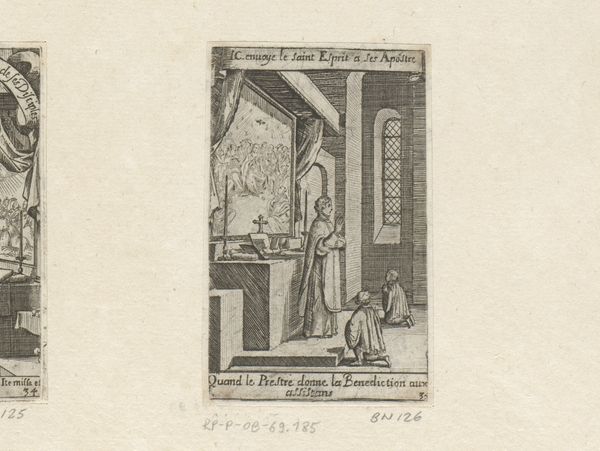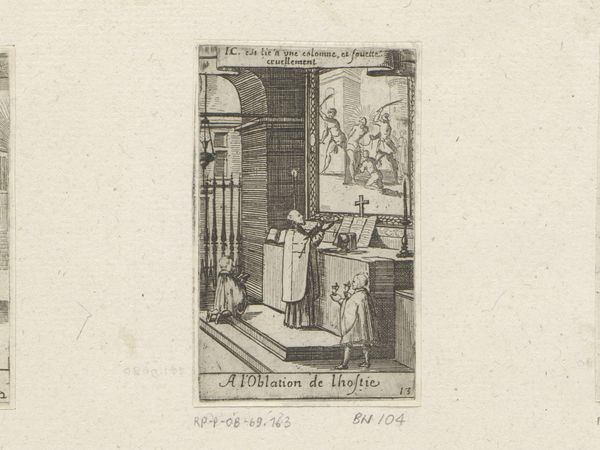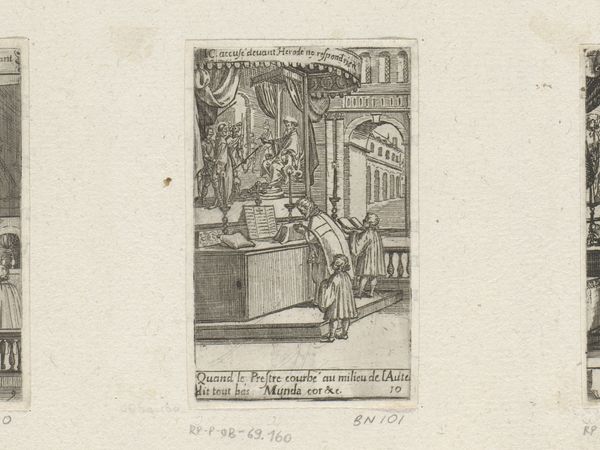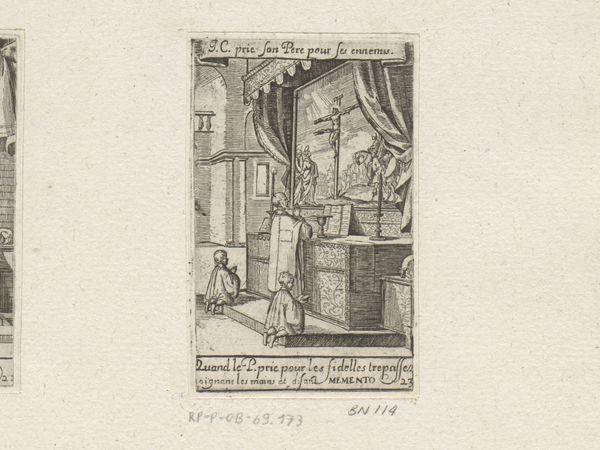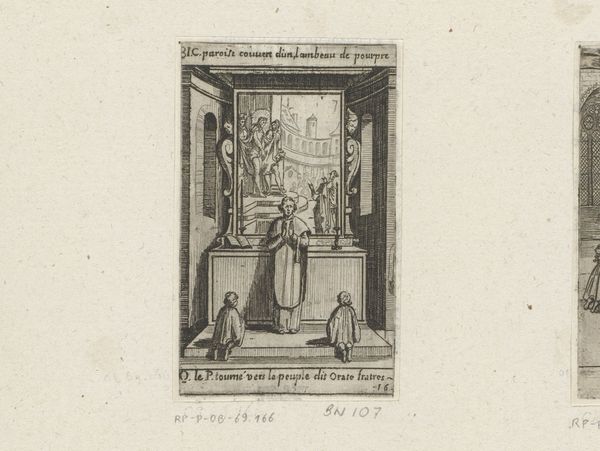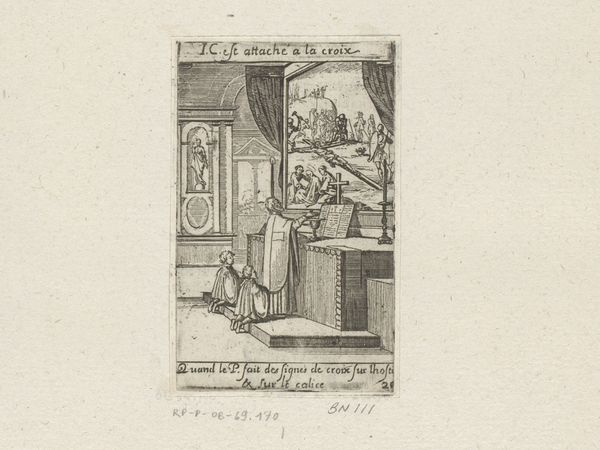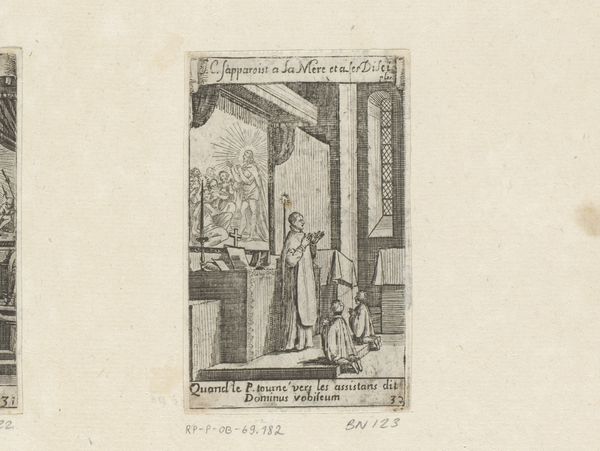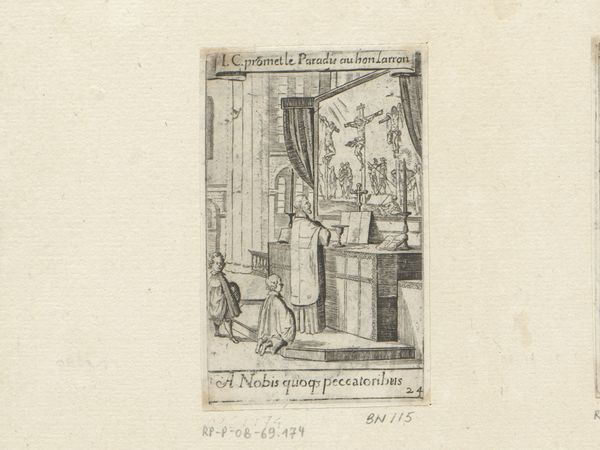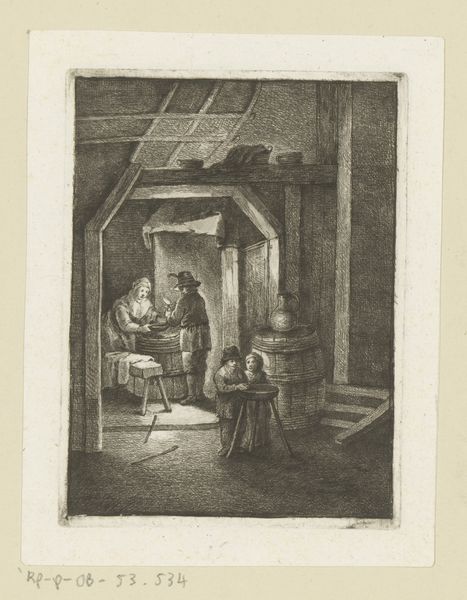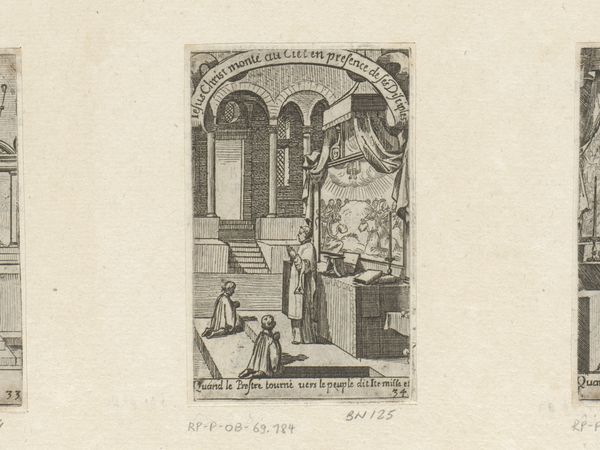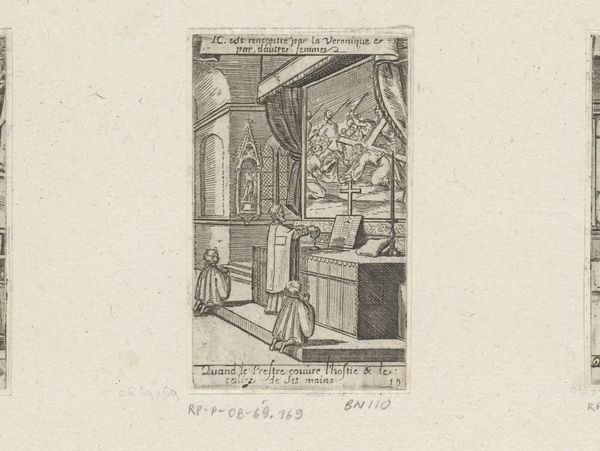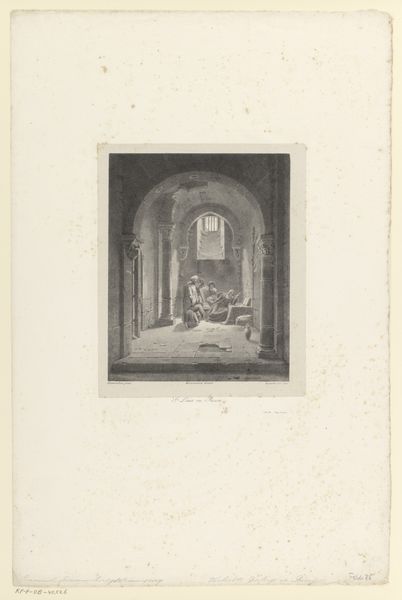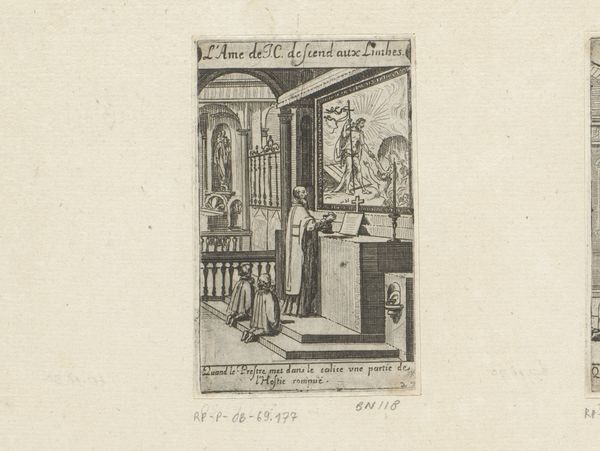
drawing, print, etching, ink, pen, engraving
#
portrait
#
drawing
#
aged paper
#
toned paper
#
light pencil work
#
medieval
#
baroque
# print
#
etching
#
old engraving style
#
sketch book
#
figuration
#
personal sketchbook
#
ink
#
pen-ink sketch
#
line
#
sketchbook drawing
#
pen
#
genre-painting
#
history-painting
#
storyboard and sketchbook work
#
sketchbook art
#
engraving
Dimensions: height 23 mm, width 24 mm
Copyright: Rijks Museum: Open Domain
Curator: This engraving, "Schrijvende kerkvader Hieronymus in een interieur" by Isaac Walraven, likely created between 1696 and 1765, depicts Saint Jerome writing. I'm immediately drawn to the density of line work and how that shapes the space. What strikes you? Editor: It’s small, intricate… almost like a vignette lifted from a larger narrative. I'm fascinated by the detailed rendering, but the paper looks almost aged or fragile. What does that material history say about its making and reception? Curator: The toned paper, the etched lines – they speak volumes. Think about the labour involved, the meticulous hand required. Each line, each shadow, represents a deliberate act of production within a specific economic context. Were these prints readily available, or were they luxury items, revealing particular networks of distribution and value? Editor: So, the medium isn’t just a tool but a social artifact? What was the cultural impact of this sort of mass production and image dissemination? Curator: Precisely! Engravings allowed for relatively wider circulation of imagery, impacting social consciousness and consumption habits. And what about the subject? Saint Jerome. Consider the Church's power during the baroque era. Do you think there is any relationship to religious symbolism, the mode of production, and social control? Editor: That's a great point! I never thought about the religious symbolism intersecting with economic power so directly through the medium itself. The Church could disseminate a very specific narrative by producing a small-scale object that was fairly easy to distribute. Curator: And consider, if this piece represents a figure producing written work, might we draw a link between artistic labor and intellectual labour in the era? Editor: That is a lot to think about. Thank you. Curator: Thank you. Seeing the art in the light of its materiality offers insights into the larger network of cultural and economic production of art.
Comments
No comments
Be the first to comment and join the conversation on the ultimate creative platform.
